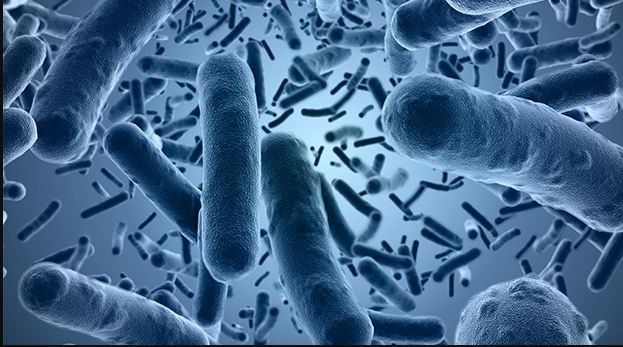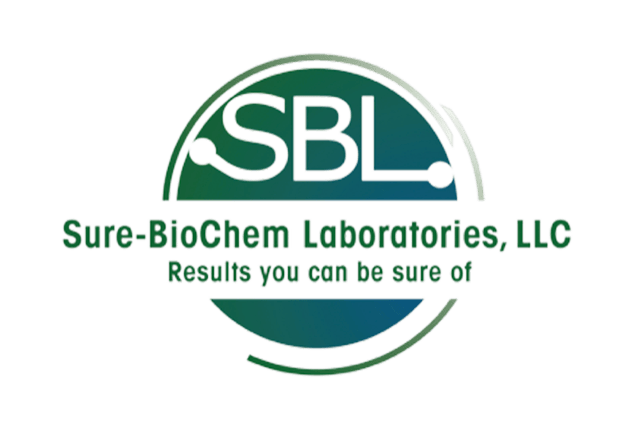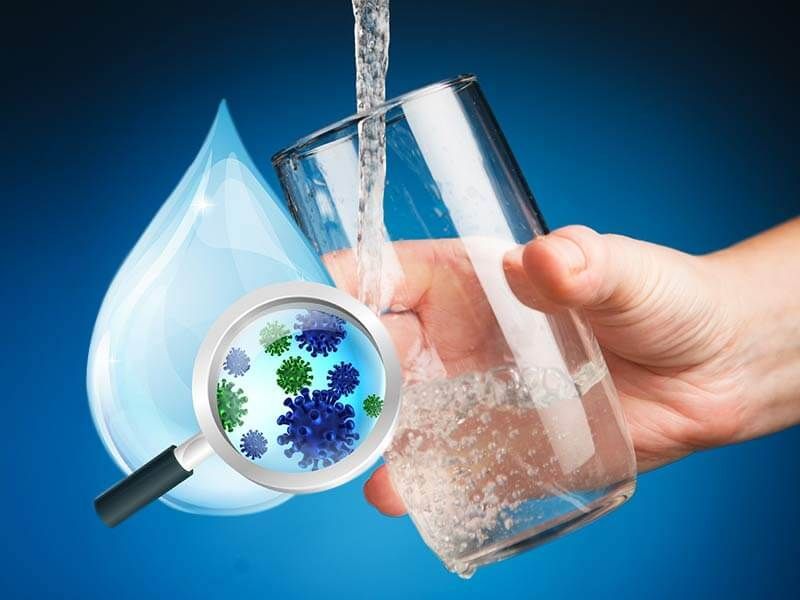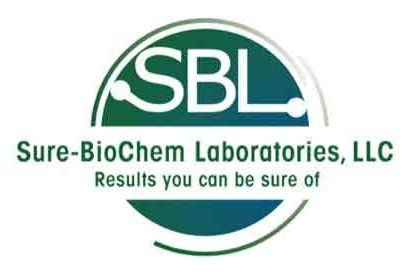The Comprehensive Cleanroom Manufacturing Help Guide
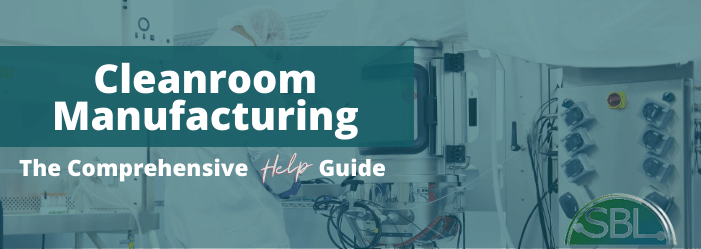
Cleanroom manufacturing is a vital element of production, adding stability to processes that require an incredible level of precision and accuracy.
An industrial cleanroom prevents contaminants and creates conditions that manufacturers need to produce sensitive equipment.
In this article, we look at what manufacturing for cleanrooms look like, what technology and terminology are involved, and why it is such a vital component of contemporary production.
Read on to learn more about cleanroom technology!
The Importance of Having a Proper Cleanroom Process, Especially for Manufacturing Companies
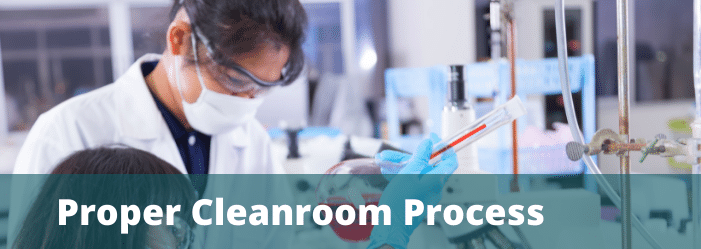
Cleanroom manufacturing is nuanced and multifaceted.
Many variables contribute to the quality and overall utility of a cleanroom. Moreover,
specifications
may vary based on industry.
The point, after all, is to provide a sterile, highly controlled environment of production for a specific product.
Below, we explore the nuance and variation that goes into cleanroom manufacturing.
Why does manufacturing need a cleanroom?
To put it simply, cleanrooms exist to ensure the highest possible standard of production.
When it comes to products that are designed for human consumption, it’s assumed that a high standard of cleanliness is baked into the manufacturing and transporting process. However, what that actually means is often an alien concept to the average consumer.
Cleanroom manufacturing is what ensures the quality and safety of a wide range of products.
For manufacturers, it’s there to make sure that nothing compromises the quality of the items that come off the production line.
For consumers, cleanroom manufacturing is there to guarantee a degree of dependability and safety that can’t be achieved without high standards and rigorous sterility practices.
What is Chain of Custody and why is it important?
A product’s chain of custody refers to the unbroken path it takes to get to the consumer's hands.
Documenting this process begins with raw materials, and weaves its way through the various stages of production and transportation.
The process of documenting the chain of custody can be very complex, with links growing into the hundreds for businesses that are exporting products overseas.
Why does it exist? For consumers, the chain of custody regulations are there to ensure a degree of transparency that would otherwise be impossible for supply chain management.
When issues with a product do occur en masse, the chain of custody protocol may be used to identify what the point of corruption was, helping to pinpoint what products are safe, and which ones need to be recalled.
For manufacturers it is equally important, creating internal accountability and providing an easy way to evaluate and critique operational efficiency.
In the event of contamination or damage, the chain of custody protocol makes it easier to identify what went wrong and prevent mistakes from being repeated.
What certifications should I look for when choosing a cleanroom provider?
Cleanroom manufacturing certifications are there to ensure the quality and history of the service you are using. There are many standards and certifications by which a company may establish its credibility.
As you analyze a service, it is always a good idea not only to find out what certifications they have but also what these certifications are saying about the quality of service that you can expect.
For example:
- HubZone Certification
- Historically Underutilized Business
- 8(a) Business Development Program Certification
- W.O.S.B Certification
Are all some samples of the certifications a cleanroom manufacturing business might have.
Additionally, it’s worth keeping in mind that local ordinances may factor into cleanroom standards, making it worthwhile to find out if the cleanroom manufacturing company you are interested in has been evaluated based on their ability to service your specific community.
Cleanroom Contamination Control and Training
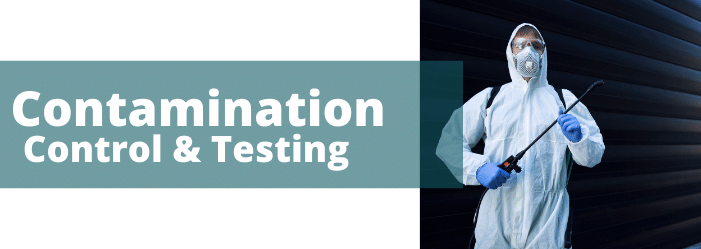
Why is it important to have the best cleanroom contamination control and training standards in place? Cleanroom manufacturing that meets the highest possible industry standards guarantee several things.
- Safety for employees: Cleanroom manufacturing standards aren’t just there to protect the quality of a product. They also ensure a stable work environment for employees, eliminating microbiological organisms, and controlling against potentially hazardous conditions that could be dangerous for employees.
-
Stable Conditions for Equipment: Many pieces of manufacturing equipment require an extreme level of precision. These sensitive tools can be thrown off, or even damaged by dust and other contaminants, resulting not only in costly repairs, but also in manufacturing errors, and disruptions to productivity. Cleanroom manufacturing ensures a high degree of stability that protects sensitive equipment from needless damage. -
Consumer Safety: Cleanroom contamination control also ensures consumer safety. The average person assumes that the products they use are safe and dependable. While this assumption is largely accurate, it can exist only thanks to regulations that insist upon the highest level of contamination control. Holding high standards not only protects consumers but also ensures a degree of consistency within a manufacturer's product line, guaranteeing that each and every item on the shelf is as advertised.
Businesses that maintain high standards not only remain industry compliant but also enjoy a reputation for reliability. Consumers may not understand exactly why the products they use are safe and consistent, but they certainly appreciate it.
What’s contamination control?
Contamination control is a generic term that refers to any processes that are in place to eliminate the potential for manufacturing space corruption. Naturally, it means different things depending on the industry.
For a manufacturing company that depends on sensitive equipment, it could mean eliminating dust and moisture in the air.
For businesses producing something destined for human consumption, the focus might be more targeted toward the elimination of bacteria.
In all cases, contamination control depends on establishing stability within a production space.
Thousands of variables in the form of equipment, pollution, and humans exist outside the manufacturing space. Contamination control is there to ensure that the space being used for production remains predictable.
This can only be achieved through high-quality cleanroom manufacturing and a high degree of ongoing training efforts.
Training for Cleanrooms is Key
Cleanroom training is a complex but crucial element of avoiding contamination. Protocol for training cleanroom technicians may vary depending on the goals of the manufacturer. However, training will include information on:
- What can be brought into a cleanroom. As the name insists, cleanrooms must be clean. This means that every article introduced to the space is vetted. If something doesn’t need to be there it shouldn’t be. Similarly, any material that does enter a cleanroom should be appropriately sanitized. Training emphasizes what to do.
- Material disposal. How often do gloves, masks, etc need to be cycled out? Moreover, what process goes into replacing them? Cleanroom manufacturing training ensures that everyone understands how and when to cycle out protective wearables.
- Cleanroom hygiene. Cleanroom hygiene is significantly more stringent than personal hygiene. Well-trained cleanroom technicians understand how to take care of themselves on the job in a way that maintains the purity of their workspace.
Explore Cleanroom Auditing Opportunities
Other Industries that Require Cleanrooms
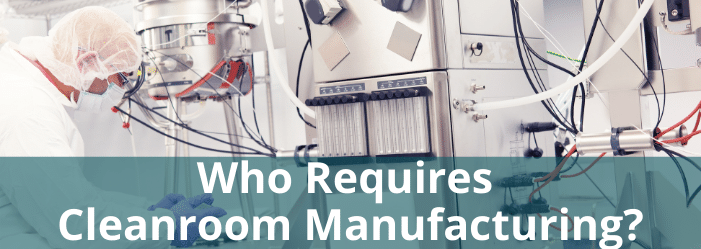
Pharmaceutical
Naturally, the
pharmaceutical industry
requires an extreme level of precision in its manufacturing process. Cleanroom pharmaceutical standards monitor dust, humidity, temperature, and micro-organism levels to ensure the product is safe and of high quality.
Industrial
Food Service
Government Services
Cosmetics
Additional Aspects to Consider

It’s important to keep in mind that proper cleanroom manufacturing upkeep is a long-term consideration. Short-term expenses and front load training and preparation may seem overwhelming at first.
However, sustainability is the ultimate goal. Your objective is to build processes and infrastructure that will offer your productivity consistent, repeatable protection from contamination.
Below, we examine some further considerations that will help you get the most out of your cleanroom manufacturing infrastructure.
What is the potential cleanroom partner’s reputation?
Like any new hire, reputation is an important consideration to make as you vet between cleanroom manufacturing partners. Does this organization have a proven track record of success?
Moreover, has their previous caseload included companies with needs and operational capacities similar to your own?
As this article has shown, there are many different kinds of cleanrooms. Just because a potential partner has done good work in the past does not necessarily mean they are well-positioned to meet your needs.
What’s the provider’s leadership like?
Think about your business. How does company leadership shape the way the entire organization operates?
Chances are, what the higherups do is paramount to how the entire company runs.
The same will be true of any other cleanroom partner. How a business is run ties naturally into its entire ethos, translating directly into the experiences that potential clients will have.
SBL was founded and run by an African American woman who wasn’t afraid to break down barriers and work hard to provide the highest possible level of service. This determination is palpable in every client interaction.
You should be able to recognize the qualities you want in a partner in the company leadership of the cleanroom manufacturer you are considering.
Do they specialize in cleanroom manufacturing?
Finally, learn about how the company you are considering specializes in your particular needs.
As stated above each industry has its own compliance guidelines that must be carefully followed. A failure to comply can come with significant consequences, both for the quality of your production efforts (think equipment failures and corrupted product batches) and your legal standing.
Businesses that fail to comply with sanitary regulations risk penalties, suspensions, and significant hits in the punitive court of public opinion. You don’t want that, especially not when it can be avoided by making a smart hire. So, study up.
Don’t just look for a good cleanroom partner. Look for someone who is great at fulfilling the specific needs of your organization.
I’m Ready to Find a Cleanroom Manufacturing Partner
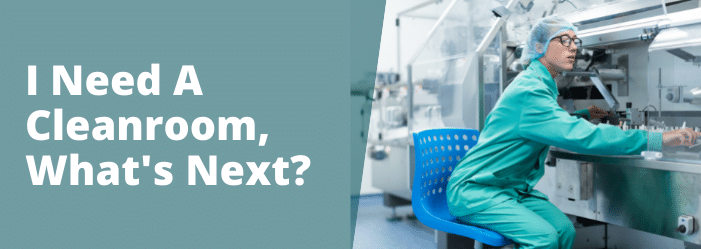
So, you’ve learned everything there is to know about cleanroom regulations. You’ve figured out what your business needs are, and how to vet qualified candidates to find someone who is best suited to meet those needs. What comes next?
Now that you know all of that, it’s time to start looking for service quotes. As with anything, it’s important to look for a diverse range of opinions. Speak with 2-5 providers to find out what they would do to meet your needs, and how much it will cost to get the job done. Remember, the lowest bid might not be the best one.
opt for the quote that provides the most bang for your buck. This is a long-term investment that will play an active role in your day-to-day operations.
Get your cleanroom checklist
and make sure your business has everything it needs to run as safely and efficiently as possible.
Also Suggested
Related Learning
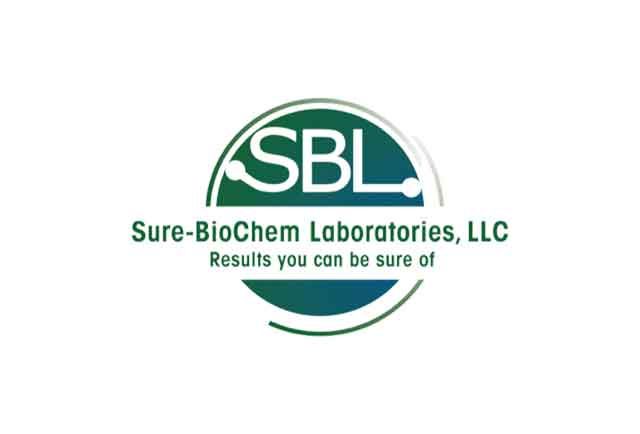
Need Our Help? Fill Out a Service Request Today!
We're here to assist you with all your needs. Please complete our service request form to ensure we provide the best possible service.
It's quick and easy—tell us a little about your request, and our team will reply promptly. We look forward to serving you!
Blog Contact Page
